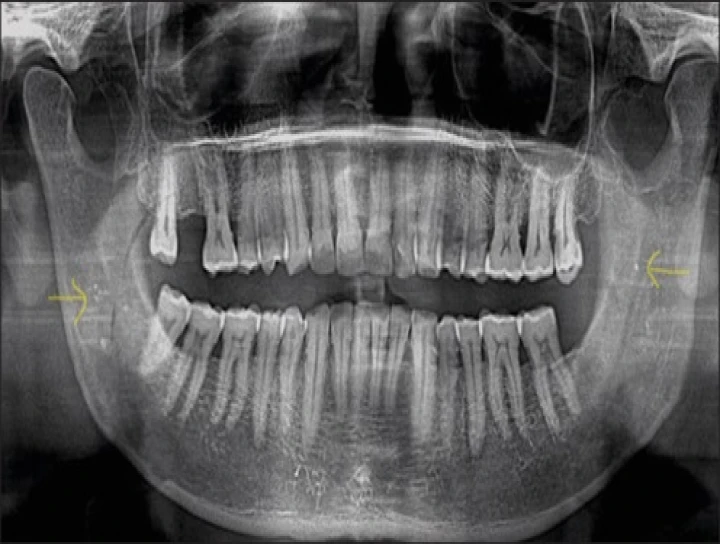
Radiographic evaluation of tonsilloliths (tonsil stones) using digital panoramic radiography is an interesting and useful topic in dental and medical imaging. Here’s a brief overview of how tonsilloliths are typically evaluated using this imaging technique:
What Are Tonsilloliths?
Tonsilloliths are calcified structures that form in the tonsils. They are composed of trapped debris, including dead cells, bacteria, and food particles that become calcified over time. They can be asymptomatic but sometimes cause discomfort, bad breath, or difficulty swallowing.
Digital Panoramic Radiography
Digital panoramic radiography (DPR) is a type of x-ray that captures a broad view of the upper and lower jaws, including the teeth, jaws, and surrounding structures, including the tonsils. It provides a comprehensive view of the oral and maxillofacial region.
Evaluating Tonsilloliths Using DPR
1. **Image Acquisition:**
- DPR involves a rotating x-ray source that captures the entire area in a single image. The patient’s head is positioned so that the x-ray beam can pass through the area of interest effectively.
2. **Image Characteristics:**
- Tonsilloliths appear as radiopaque (white or light) areas on a digital panoramic radiograph. This is due to their calcified nature, which contrasts with the surrounding tissues.
3. **Location:**
- Tonsilloliths are typically located in the tonsillar crypts, which are the recesses or pockets of the tonsils. They can be seen on the radiograph near the posterior region of the mandible, often near the area of the tonsils.
4. **Detection:**
- Although DPR is not specifically designed to detect tonsilloliths, they can sometimes be identified due to their radiopaque appearance. They may appear as small, round, or irregular radiopaque densities in the area of the tonsils.
5. **Differentiation:**
- It's important to differentiate tonsilloliths from other radiopaque structures or conditions. For instance, calcifications of the stylohyoid ligament or other anatomical structures may appear similar, so clinical correlation and possibly additional imaging may be required.
6. **Clinical Correlation:**
- Radiographic findings should be correlated with clinical symptoms and examination. If tonsilloliths are suspected based on symptoms but not clearly seen on DPR, other imaging modalities like a lateral skull x-ray, CT scan, or ultrasound may be used for better visualization.
7. **Documentation:**
- In a clinical setting, documenting the presence and size of tonsilloliths can help in planning treatment or monitoring their development.
Advantages and Limitations
**Advantages:**
- **Comprehensive View:** DPR provides a wide view of the oral and maxillofacial region, which can be useful for identifying multiple issues simultaneously.
- **Efficiency:** It’s a relatively quick and non-invasive procedure.
**Limitations:**
- **Resolution:** DPR may not provide the fine detail required to identify small tonsilloliths.
- **Overlap:** Structures in the tonsil region might be overlapped with other anatomical structures, making it challenging to isolate and identify tonsilloliths clearly.
Conclusion
Digital panoramic radiography can be a useful tool in the evaluation of tonsilloliths, particularly when combined with clinical examination and other imaging techniques. It allows for a broad view of the relevant anatomical structures, though its limitations mean that additional imaging might sometimes be necessary for a definitive diagnosis.


No Any Replies to “Radiographic Evaluation of Tonsilloliths in Digital Panoramic Radiography”
Leave a Reply